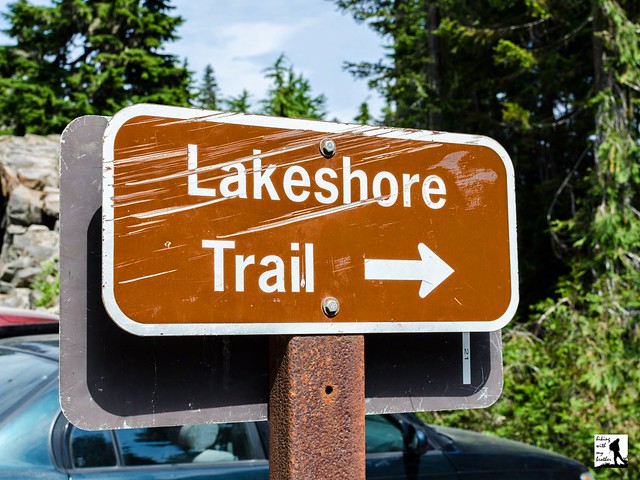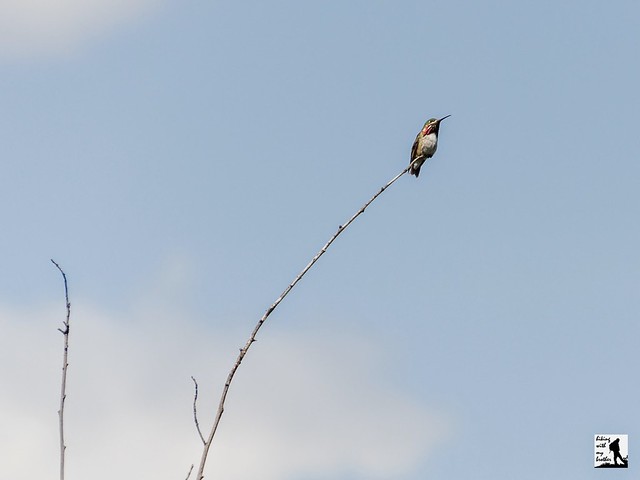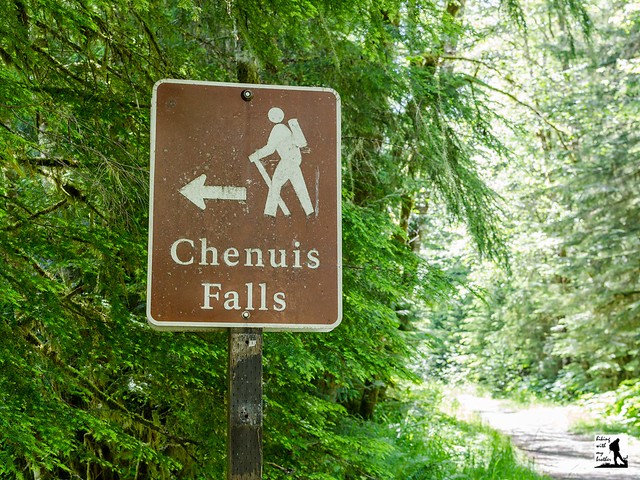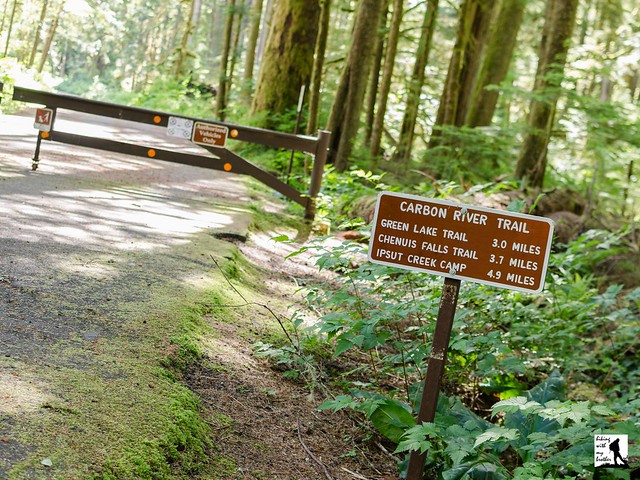Total Ascent: 1600ft
Highest Point: 6400ft
Total Distance: 8.0 miles
Location: N 46° 55.297, W 121° 49.135
Required Permit: National Park Pass
Difficulty: Moderate
 One of our longer overnights this summer involved a visit to the the Mowich Lake area. Popular and easily accessible, Mowich Lake serves as a jumping off point for a variety of adventures ranging from multi-day backpacks to short day hikes. Perhaps the most impressive destination is a sprawling series of alpine meadows on the northern flanks of Mt. Rainier known as Spray Park. Complete with a stunning waterfall, fields of wildflowers, and the mountain’s sparkling glaciers, this is a hike you will never forget.
One of our longer overnights this summer involved a visit to the the Mowich Lake area. Popular and easily accessible, Mowich Lake serves as a jumping off point for a variety of adventures ranging from multi-day backpacks to short day hikes. Perhaps the most impressive destination is a sprawling series of alpine meadows on the northern flanks of Mt. Rainier known as Spray Park. Complete with a stunning waterfall, fields of wildflowers, and the mountain’s sparkling glaciers, this is a hike you will never forget. Around 105,000 years ago, vents opened on the northern side of Mt. Rainier, which spewed a layer of hard lava into the surrounding area and formed the foundation of Spray and Mist Park. Today we know those vents as Echo Rock and Observation Rock. Around 1881, the Northern Pacific Railroad became interested in the northwest portion of Mt. Rainier and sent a geologist named Bailey Willis to look for coal and to see if the area was suitable for tourism. Part of Willis’s expedition involved cutting a trail from Wilkerson to Mowich Lake that became known as the Grindstone Trail. From Mowich Lake, Willis explored the region and by 1883 he had built a route to Spray Park, the Bailey Willis Trail, and led visitors up into the alpine wonderland.
Around 105,000 years ago, vents opened on the northern side of Mt. Rainier, which spewed a layer of hard lava into the surrounding area and formed the foundation of Spray and Mist Park. Today we know those vents as Echo Rock and Observation Rock. Around 1881, the Northern Pacific Railroad became interested in the northwest portion of Mt. Rainier and sent a geologist named Bailey Willis to look for coal and to see if the area was suitable for tourism. Part of Willis’s expedition involved cutting a trail from Wilkerson to Mowich Lake that became known as the Grindstone Trail. From Mowich Lake, Willis explored the region and by 1883 he had built a route to Spray Park, the Bailey Willis Trail, and led visitors up into the alpine wonderland. It was likely during the construction of the Bailey Willis Trail that Spray Falls was first found. At the falls, Spray Creek tumbles hundreds of feet down steep cliffs to break into a misty spray of water. The creek, falls, and park are all named for this display. Over time, the Bailey Willis Trail to Spray Park was eventually replaced by the Spray Park Trail used today, though there are still a few sections that follow the old route.
From the Mowich Lake camping area, the well-signed trail begins by descending into a forest of cedar and fir rising out of a blanket of greenery. After a few switchbacks and .2 miles of hiking find yourself at a junction with the Wonderland Trail. Veer right, following the sign that points toward Spray Park and Eagle’s Roost Camp. Legions of boot steps keep this trail clear and easy to navigate as it crosses over creeks and traverses forested ridges. After another 1.2 miles arrive at the Eagle Cliff Viewpoint, a small area where trees have been cleared to offer a lovely view of Mt. Rainier. This is a good place to drop your pack for a short rest before continuing onward.
 From Eagle Cliff, continue another .5 mile past Eagle’s Roost Camp to the spur trail leading out to Spray Falls. This short side trip is not to be missed, and adds less than a half-mile of hiking. Descend down to Spray Creek and crane your neck to take in the tumbling falls. Slightly better views are possible if you can find an easy way to cross the creek. After you’ve taken in the namesake falls, head back up to the main trail and get ready for a climb. The trail begins a series of tight switchbacks straight up the mountainside.
From Eagle Cliff, continue another .5 mile past Eagle’s Roost Camp to the spur trail leading out to Spray Falls. This short side trip is not to be missed, and adds less than a half-mile of hiking. Descend down to Spray Creek and crane your neck to take in the tumbling falls. Slightly better views are possible if you can find an easy way to cross the creek. After you’ve taken in the namesake falls, head back up to the main trail and get ready for a climb. The trail begins a series of tight switchbacks straight up the mountainside. After .7 miles of climbing, cross Spray Creek and enter the edge of Spray Park. Wander through a meadow and follow the trail as it continues to open up, getting that much better with every step. While it is hard to find a stopping point that isn’t stunning, we recommend you continue to climb and leave the crowds behind. Press on to the high point of the trail that divides Spray Park and Seattle Park, roughly 4 miles from the trailhead. Here you’ll find big views of both parks and a side trail that leads out to Observation Rock. No need to follow that trail too far -- a short scramble will get you face-to-face with the mountain.
 Whether you’re visiting Spray Park for the day or just passing through on your way to your next campsite, the experience is sure to linger. For that reason, you can expect a lot of company during the summer months, though the crowds thin the further you press into the park. This hike should be approachable for most hikers, though the elevation gain may put it out of reach for very young or inexperienced hikers. If you haven’t been, make a trek through Spray Park’s meadows part of your next backpacking excursion.
Whether you’re visiting Spray Park for the day or just passing through on your way to your next campsite, the experience is sure to linger. For that reason, you can expect a lot of company during the summer months, though the crowds thin the further you press into the park. This hike should be approachable for most hikers, though the elevation gain may put it out of reach for very young or inexperienced hikers. If you haven’t been, make a trek through Spray Park’s meadows part of your next backpacking excursion.To get there, take I-5 South to I-405. From I-405 take SR 167 south toward Auburn. In 20 miles take the SR 410 Exit toward Sumner/Yakima. Follow SR 410 for 12 miles to SR 165. Take a right and continue on SR 165 for about 10 miles through Wilkeson and Carbonado to the Carbon River Road/Mowich Lake Road junction. Veer right onto the Mowich Lake Road and follow for 16.2 miles to the end of the road and the trailhead. -Nathan
Print Google Directions >>
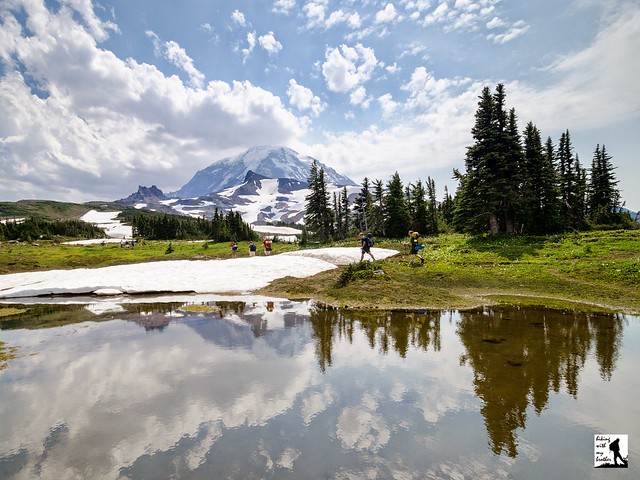


 For the 4th year in a row, we've put together a great calendar to inspire a different hiking trip every weekend in the new year. The
For the 4th year in a row, we've put together a great calendar to inspire a different hiking trip every weekend in the new year. The 



